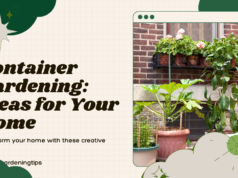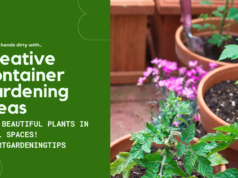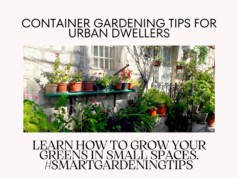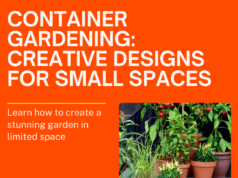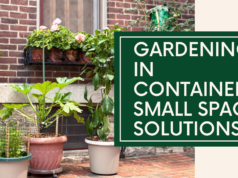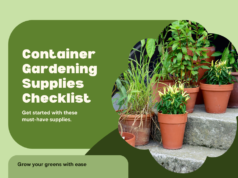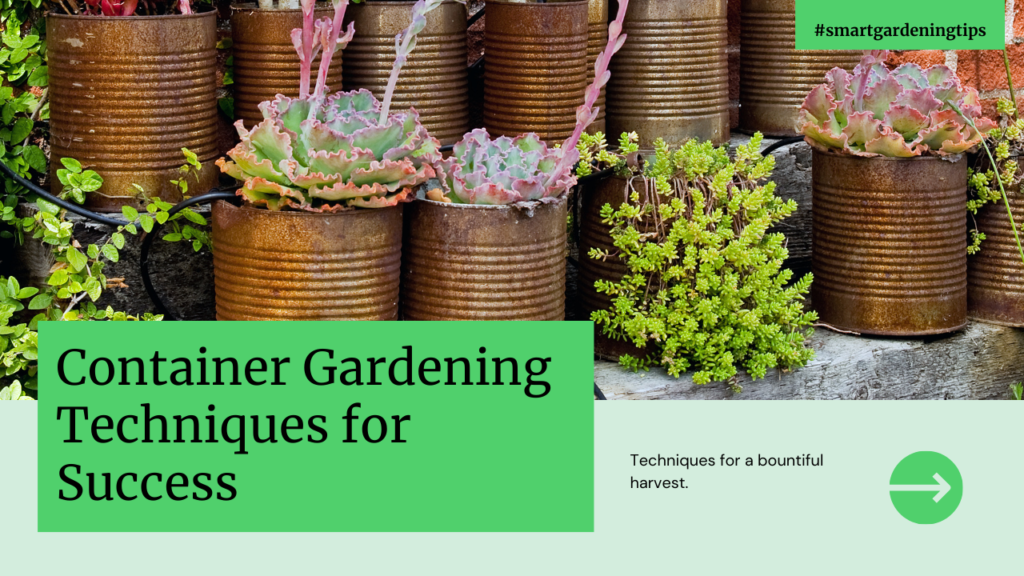
Welcome to the world of container gardening! Whether you have limited space or are just starting out, container gardening is a fantastic way to bring beauty and life into your surroundings. In this section, we will explore essential container gardening techniques that will help you achieve success with your plants.
Container gardening allows you to cultivate a variety of plants, including flowers, herbs, and vegetables, all within the confines of a container. This practical and versatile gardening method can be done by novices and experts alike, making it accessible to everyone who wants to experience the joy of growing their own greens.
By using the right techniques and following some basic principles, you can create a thriving container garden that will impress your friends and family. So, let’s dive into the container gardening techniques that will lead you to success!
Key Takeaways:
- Container gardening is a great option for those with limited space or beginners.
- With the right techniques, you can achieve success in your container garden.
- Container gardening allows you to grow a variety of plants in a confined space.
- Following basic principles will help you create a thriving container garden.
- Stay tuned as we delve into the essential techniques for container gardening success.
Benefits of Container Gardening
Container gardening is a popular and rewarding method of growing plants, especially for those with limited space or who are new to gardening. The benefits of container gardening are numerous and diverse, making it an excellent choice for anyone looking to create a thriving garden in small or unconventional spaces.
One of the key advantages of container gardening is its suitability for small spaces. Whether you have a tiny balcony, a small patio, or even just a window sill, containers provide the opportunity to bring greenery and beauty to these areas. You can easily arrange and rearrange your containers to create an attractive garden design that fits your space perfectly.
Container gardening also offers great versatility. Unlike traditional in-ground gardens, containers can be easily moved and positioned to take advantage of the optimal light conditions for different plants. This allows you to experiment with various arrangements and create visually appealing displays that suit your taste and style.
Container gardening is a convenient way to grow your own greens and herbs, even if you have limited resources. You can grow fresh produce right at your doorstep, ensuring a constant supply of organic and nutritious food.
Another significant benefit of container gardening is its accessibility to beginners. If you’re new to gardening, containers provide a manageable starting point. You can start with a few pots and gradually expand your collection as you gain more experience and confidence. Container gardening allows you to learn and develop your gardening skills at your own pace.
Moreover, container gardening requires less effort and maintenance compared to traditional gardening methods. It eliminates the need for weeding, tilling, and dealing with many pests and diseases that are common in ground gardens. This makes it a time-saving and hassle-free option for those with busy lifestyles.
In summary, container gardening offers a wide range of benefits, including its suitability for small spaces, versatility, convenience, and accessibility to beginners. With container gardening, you can create a beautiful and flourishing garden anywhere, regardless of your gardening experience or limitations in resources.
Choosing the Right Containers
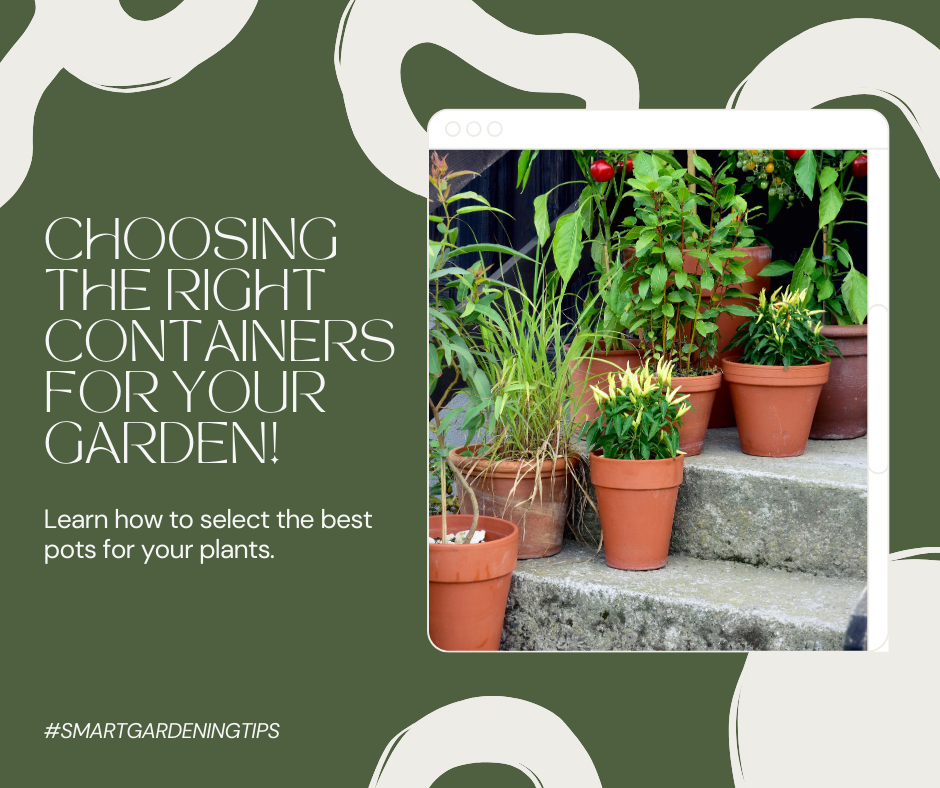
When it comes to container gardening, selecting the right containers is key to the success of your plants. The container you choose will directly impact the growth and health of your garden. Here, we’ll guide you through the process of choosing the ideal containers for your container garden.
Container Materials
Containers can be made from a variety of materials, each offering its own advantages and drawbacks. Consider the following options:
- Terra cotta: These clay pots are popular for their natural aesthetics and breathability, allowing air to reach the roots. However, they can dry out quickly and require more frequent watering.
- Plastic: Plastic containers are lightweight and affordable, making them a practical choice for container gardening. They retain moisture well and are easy to clean. However, they may not offer as good of breathability as terra cotta pots.
- Fabric: Fabric containers, also known as grow bags, provide excellent drainage and prevent overwatering. They are highly portable and foldable, making them ideal for tight spaces or gardeners on the go.
- Wood: Wooden containers, such as cedar or redwood, offer a natural and rustic appeal. They insulate the plants well, keeping the roots cool in summer and warm in winter. However, they may require regular maintenance to prevent rotting.
Container Sizes and Shapes
Container size and shape play a crucial role in creating a thriving container garden. Consider the following factors when choosing containers:
- Plant requirements: Research the specific needs of the plants you want to grow. Some plants require deeper containers to accommodate their root systems, while others thrive in shallower containers.
- Space availability: Consider the available space where you plan to keep your containers. If you have limited space, opt for vertical gardening or compact containers that can be stacked or hung.
- Plant variety: Mix and match different sizes and shapes of containers to add visual interest and create a dynamic container garden.
Drainage Considerations
Proper drainage is vital for the health of your plants. Excess water should be able to escape to prevent waterlogging and root rot. Look for containers that have drainage holes in the bottom. If the container doesn’t have drainage holes, you can create them using a drill or by placing a layer of gravel at the bottom.
Remember, each plant has unique water requirements, so ensure your containers provide the appropriate drainage for the specific plants you are growing.
Summary
Choosing the right containers for your container garden is an important step towards ensuring the success of your plants. Consider the materials, sizes, shapes, and drainage capabilities of the containers. By selecting containers that meet the needs of your plants and your gardening space, you’ll be on your way to creating a vibrant and thriving container garden.
Essential Container Gardening Supplies
When it comes to container gardening, having the right tools and supplies can make all the difference in ensuring the success and health of your plants. Whether you’re a seasoned gardener or just starting out, here are some essential items you’ll need to create a thriving container garden.
Potting Soil
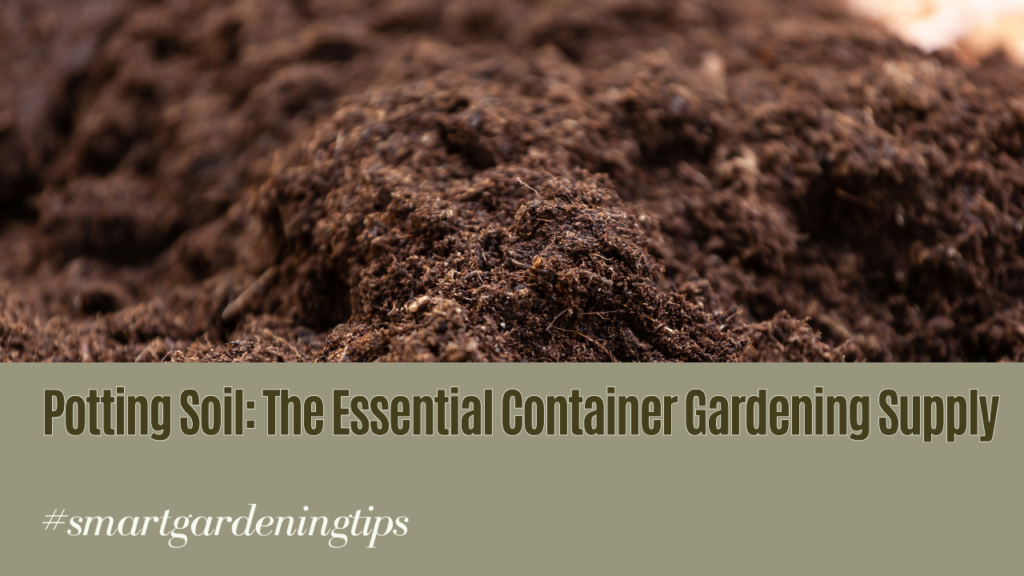
One of the most crucial supplies for successful container gardening is high-quality potting soil. Look for a well-draining mix specifically formulated for container plants. This will provide the necessary nutrients and optimal growing conditions for your plants.
Containers
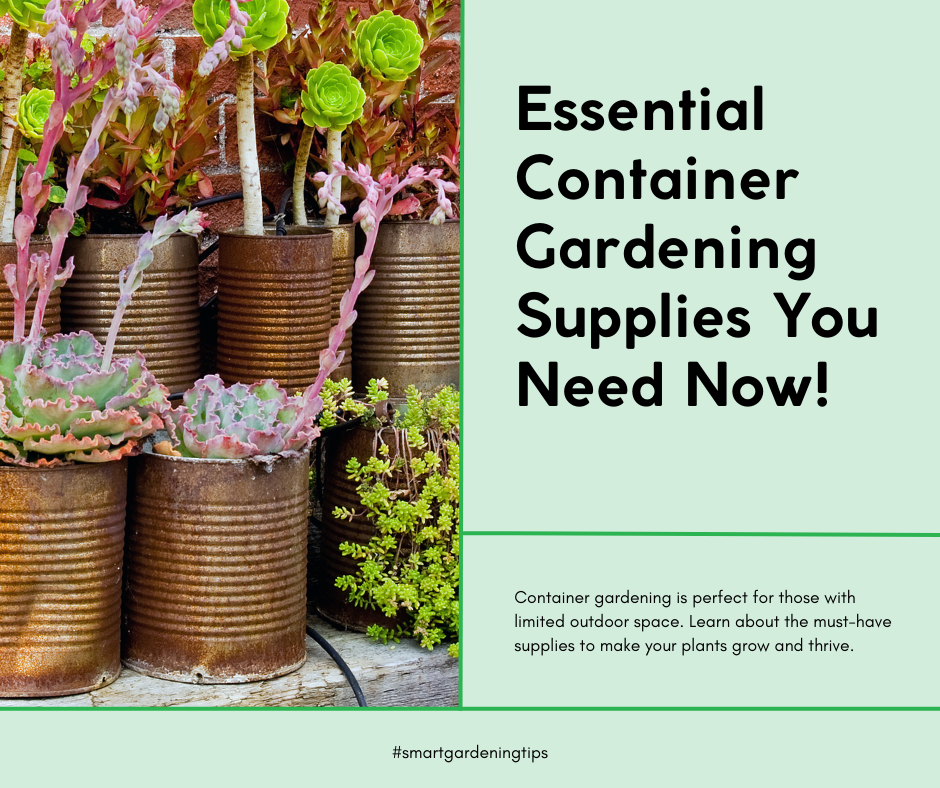
Choosing the right containers is essential for container gardening. Opt for containers that are the appropriate size and material for your plants. Some popular options include ceramic pots, plastic containers, and fabric grow bags. Ensure that the containers have proper drainage holes to prevent waterlogging.
Watering Can or Hose
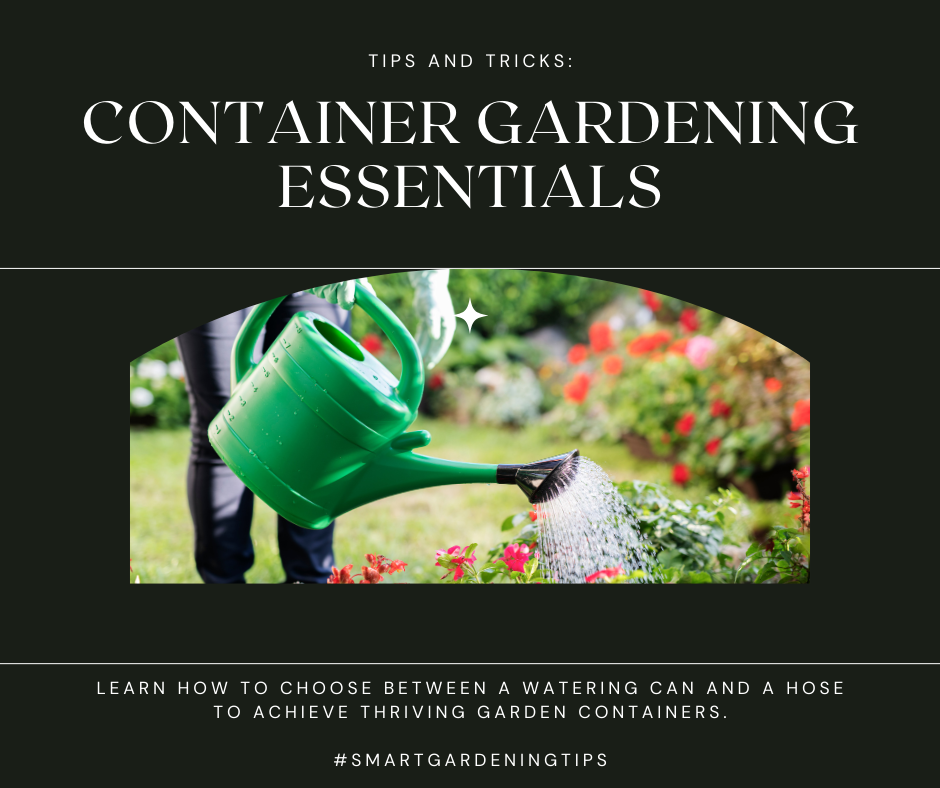
To maintain proper hydration for your container plants, you’ll need a watering can or a garden hose with a nozzle attachment. This will allow you to easily water your plants and control the water flow. Make sure to water your plants thoroughly but avoid overwatering.
Garden Gloves
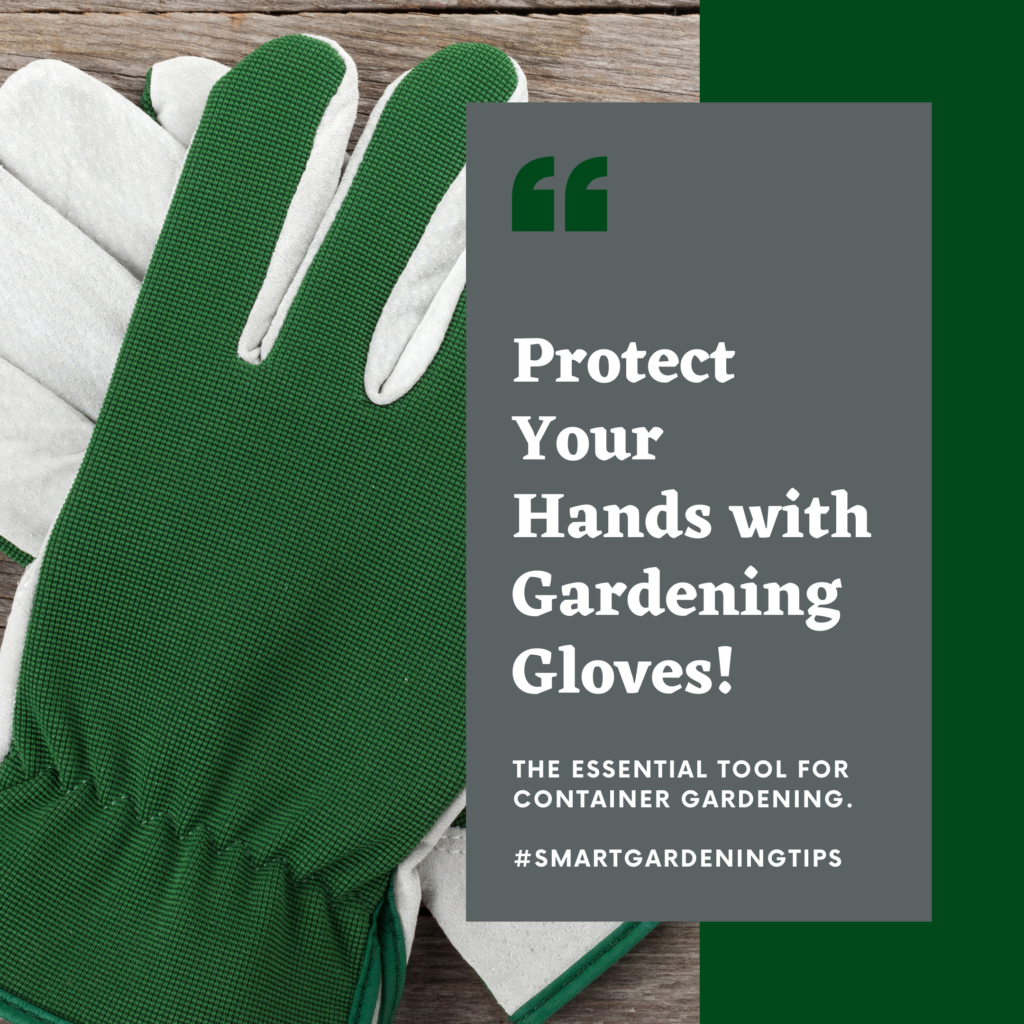
Protect your hands while tending to your container garden with a good pair of garden gloves. Gloves provide a barrier against dirt, thorns, and other potential irritants, keeping your hands clean and safe.
Garden Trowel
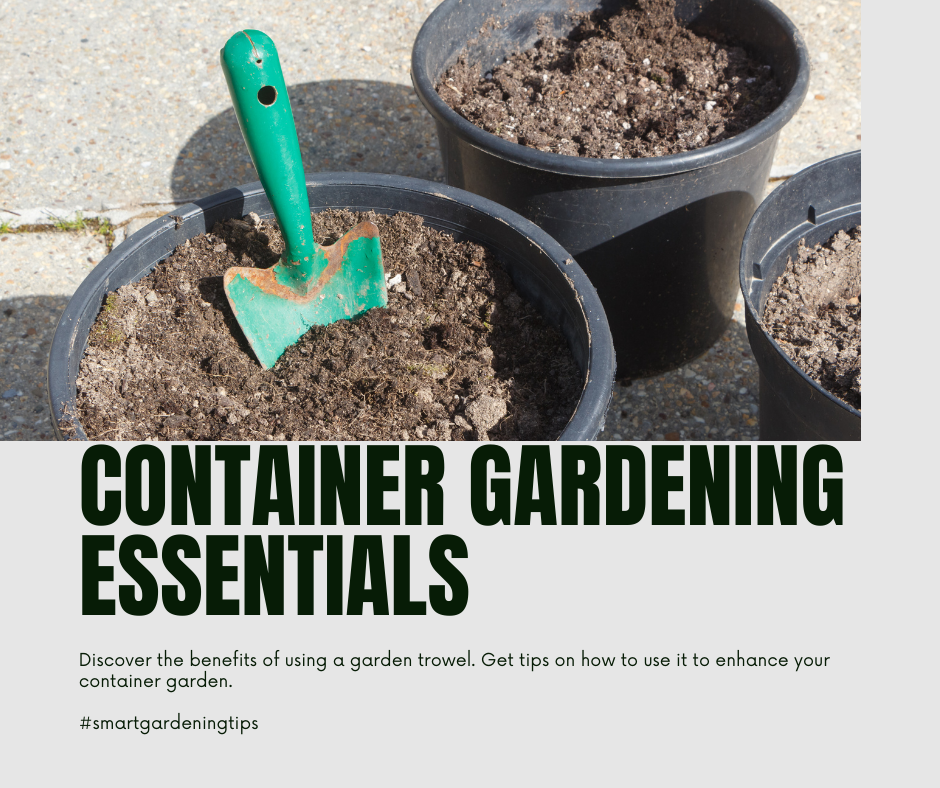
A garden trowel is an indispensable tool for container gardening. It allows you to dig, transplant, and loosen soil easily. Look for a sturdy trowel with a comfortable grip for effortless gardening.
Fertilizer
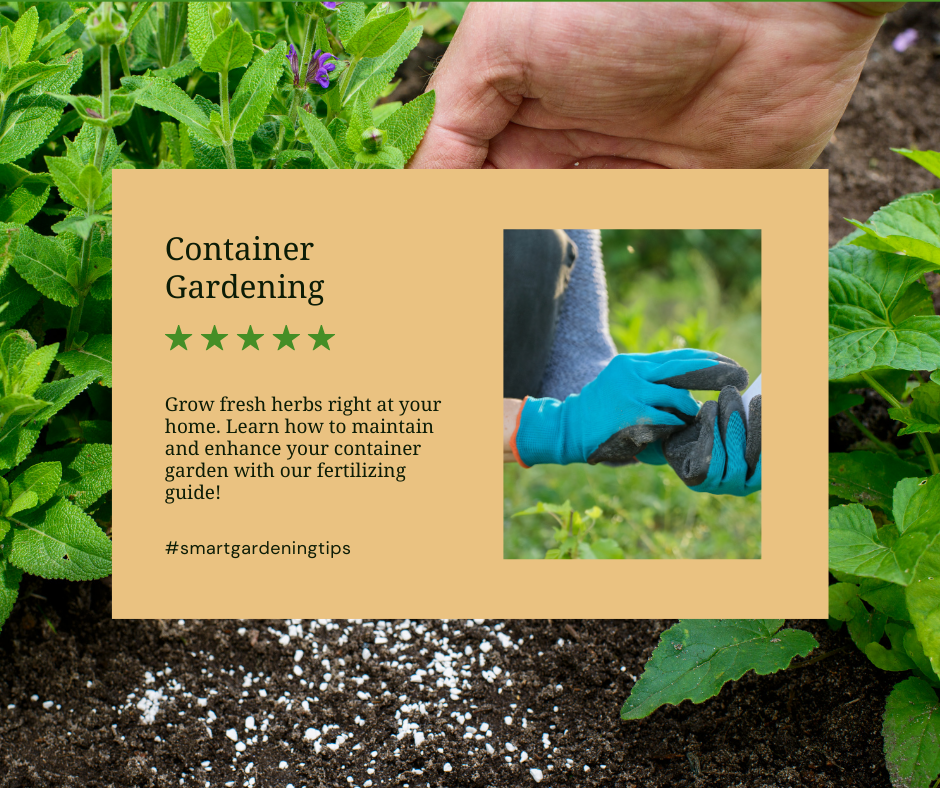
To promote healthy plant growth and vibrant blooms, it’s important to provide your container plants with regular fertilization. Choose a slow-release or water-soluble fertilizer specifically formulated for container plants. Follow the instructions carefully to avoid over-fertilization.
Pruning Shears
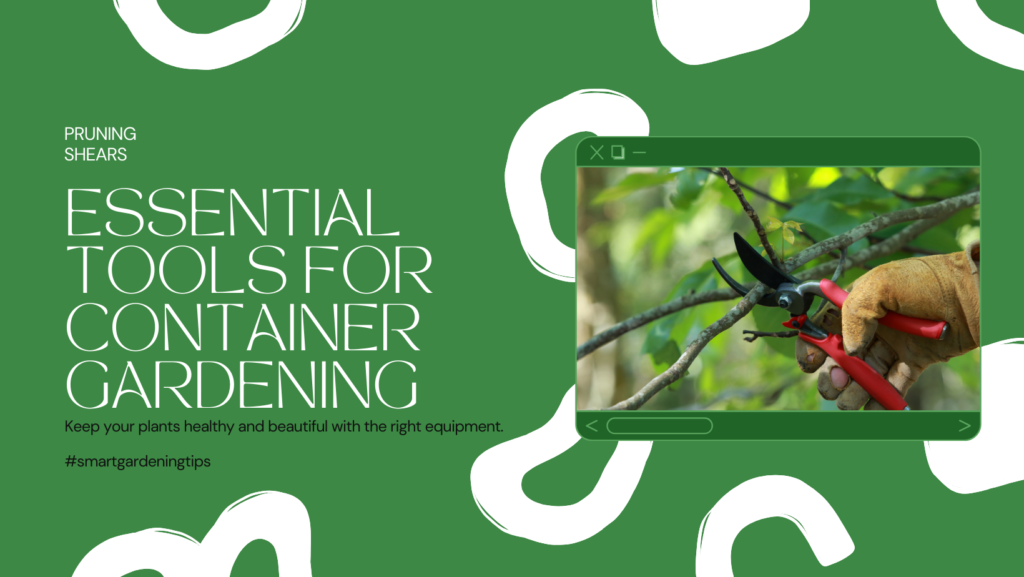
Maintain the shape and health of your container plants with a pair of pruning shears. Pruning helps remove dead or damaged foliage and encourages new growth. Look for sharp, bypass shears for clean cuts and ease of use.
Plant Markers
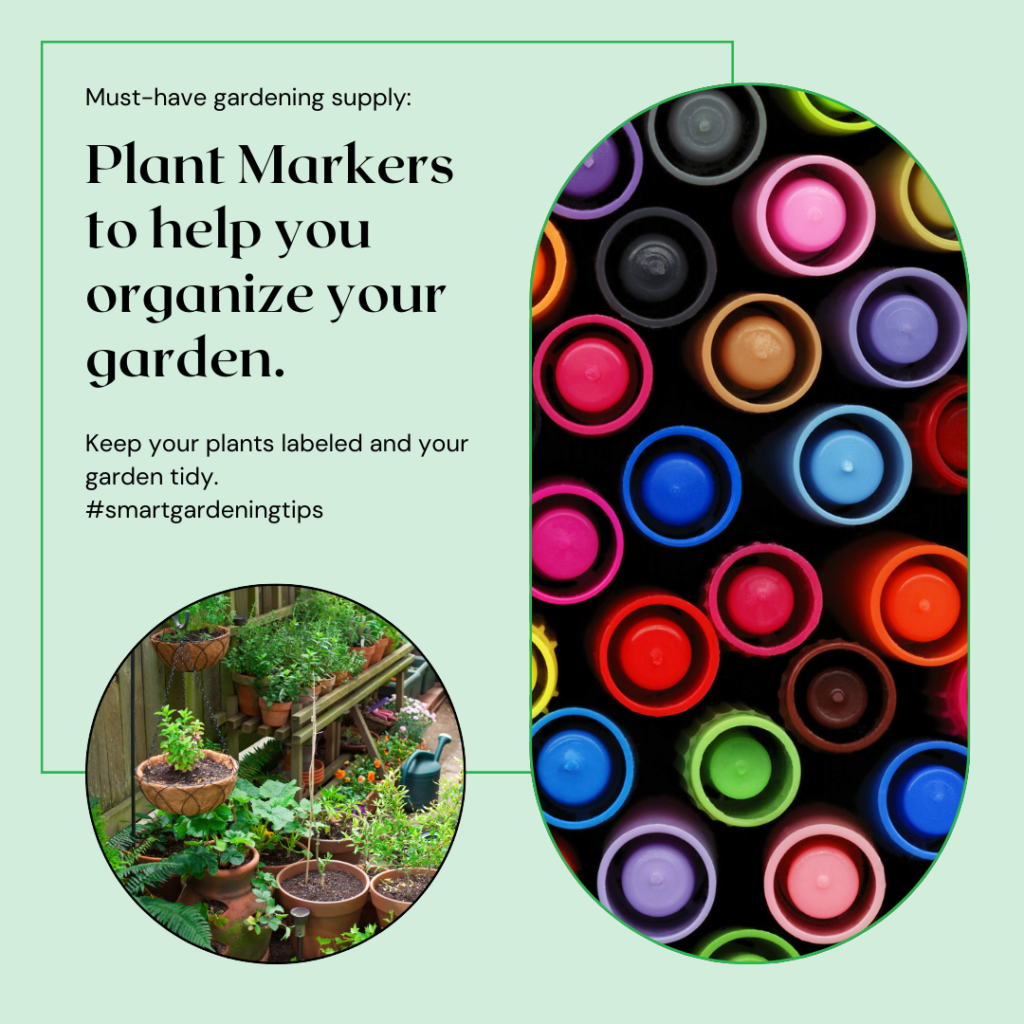
Keep track of your plants and their specific care requirements with plant markers. These small tags or stakes allow you to label each plant, noting its name, watering schedule, and any other important information. This is especially useful if you have multiple types of plants in your container garden.
Support Structures
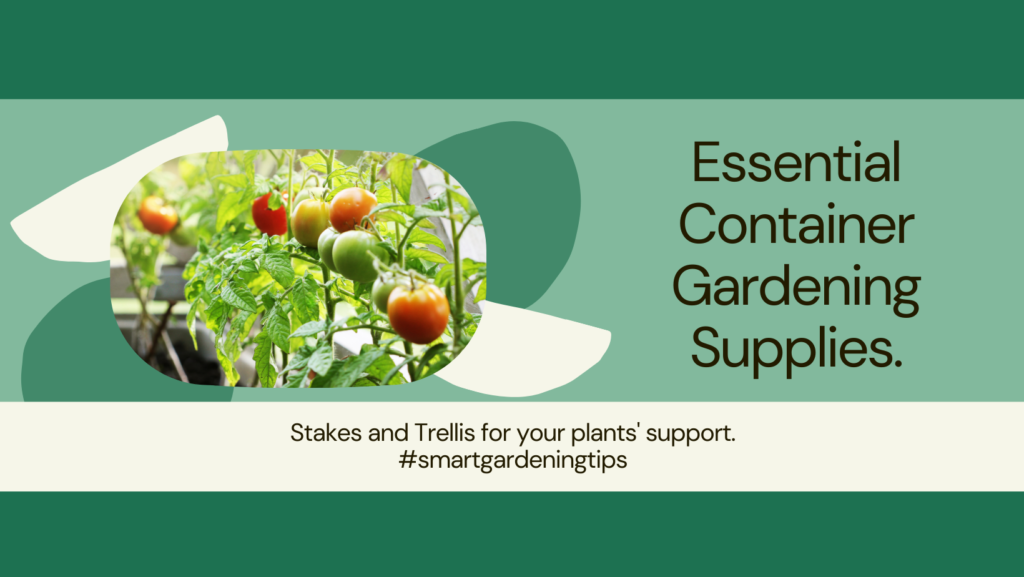
Some plants, such as tomatoes or vining flowers, may require support structures like stakes, trellises, or cages. These structures help keep your plants upright and prevent damage from heavy fruit or strong winds. Choose sturdy support options that are appropriate for the size and weight of your plants.
Garden Pruners
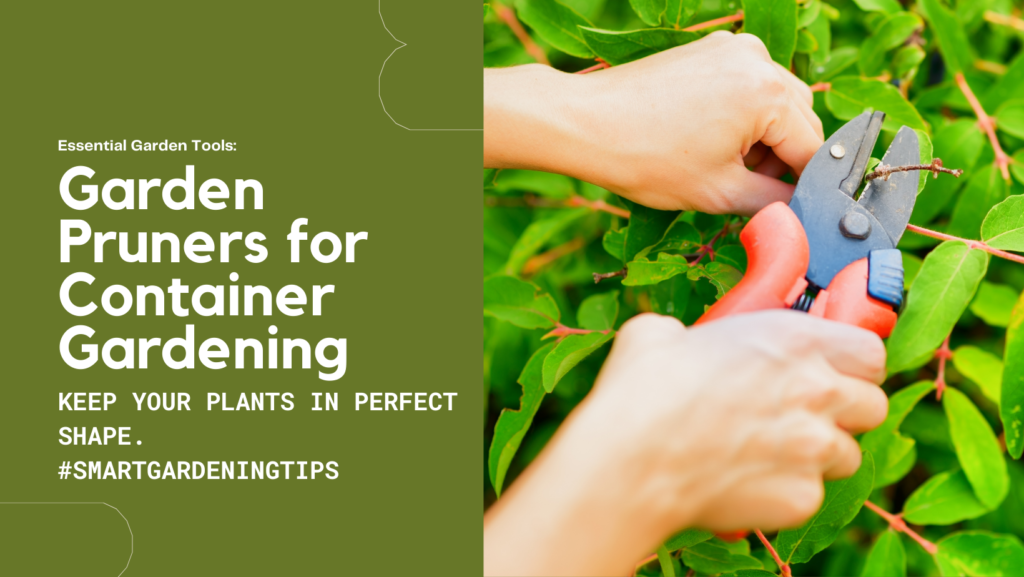
For larger plants or thicker branches, garden pruners are essential. These tools allow you to trim and shape your container plants with precision. Look for pruners with a bypass or anvil design, depending on the type of plants you’ll be working with.
By having these essential container gardening supplies on hand, you’ll have everything you need to create a successful and thriving container garden. Remember to choose high-quality potting soil, suitable containers, and provide regular care and maintenance for your plants. With the right tools and supplies, your container garden will flourish, bringing beauty and freshness to your space.
Selecting the Right Plants for Containers
When it comes to container gardening, selecting the right plants is key to creating a thriving and beautiful garden. Whether you have limited space or simply prefer the convenience of gardening in containers, choosing the perfect plants will ensure a successful and rewarding experience. In this section, we’ll explore some popular plants and vegetables that are well-suited for container gardening, as well as provide tips on how to create a diverse and visually appealing container garden.
Flowers for Container Gardening
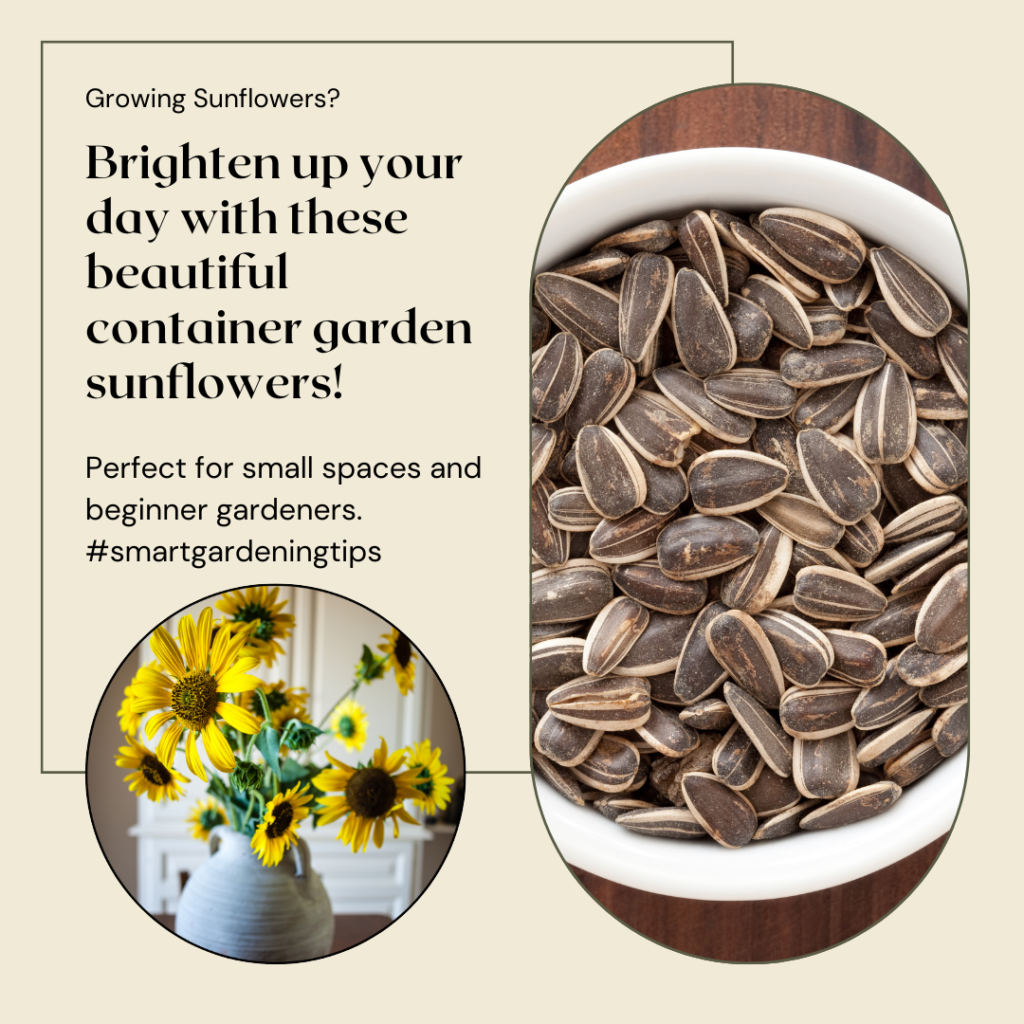
Flowers add color, fragrance, and charm to any container garden. When selecting flowers for your containers, consider their growth habits, sunlight requirements, and overall maintenance needs. Here are some popular flower choices for container gardening:
- **Petunias**: Petunias are known for their vibrant colors and versatile nature. They thrive in containers and are available in a variety of sizes, from compact to trailing.
- **Marigolds**: Marigolds are hardy flowers that add a pop of color to container gardens. They are low-maintenance and bloom profusely throughout the season.
- **Geraniums**: Geraniums are classic container plants, prized for their beautiful blooms and delightful fragrance. They prefer full sun and well-draining soil.
Herbs for Container Gardening
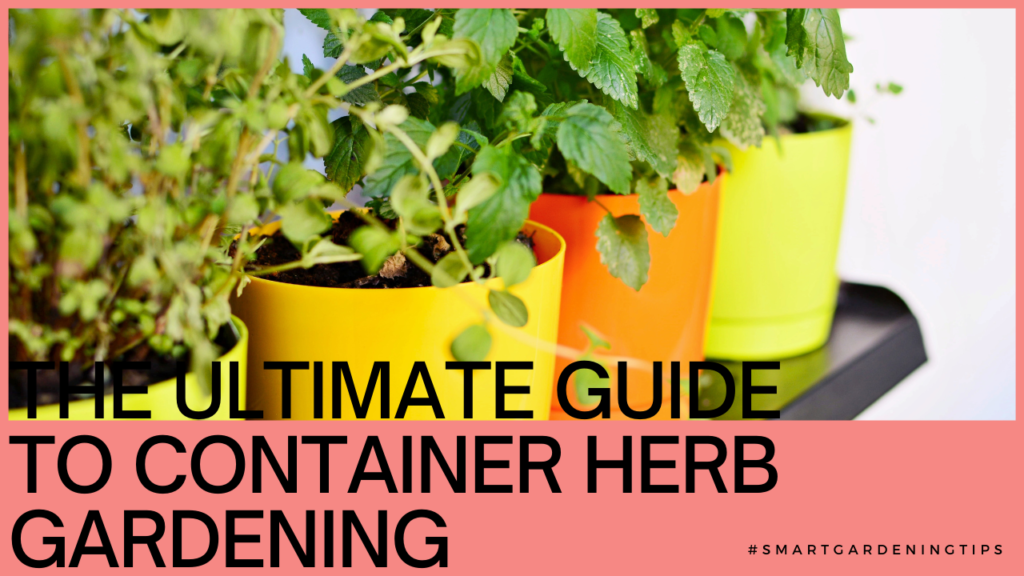
Herbs are a popular choice for container gardening due to their compact size and culinary uses. They can be grown individually or mixed together for a fragrant and functional container garden. Here are some herbs that thrive in containers:
- **Basil**: Basil is a versatile herb that adds flavor to a variety of dishes. It requires plenty of sunlight and well-draining soil to flourish.
- **Mint**: Mint is a refreshing herb that can be grown in containers to control its spread. It prefers partial shade and regular watering.
- **Rosemary**: Rosemary is a hardy herb that enjoys a sunny spot in the container garden. It requires well-draining soil and infrequent watering.
Vegetables for Container Gardening
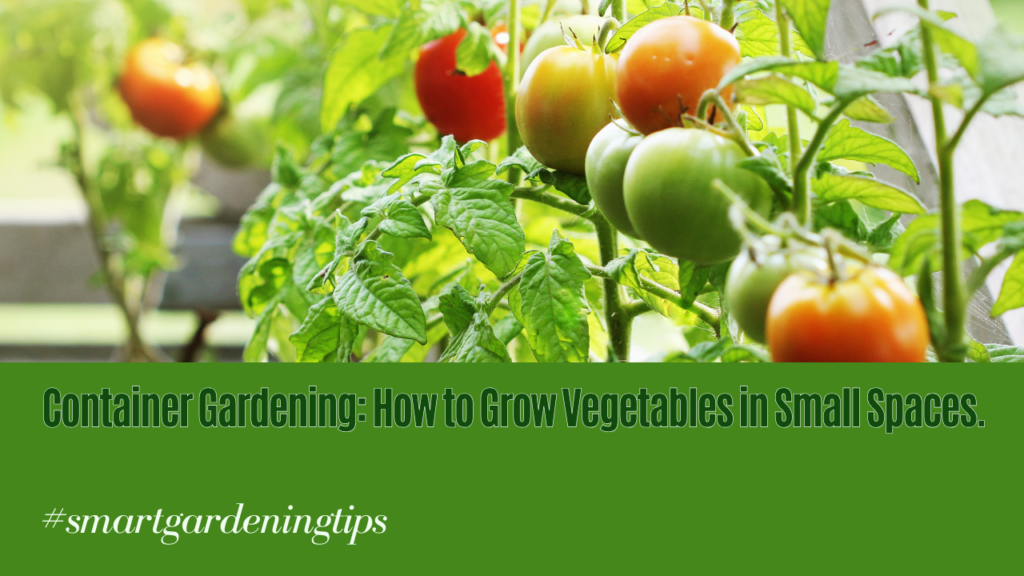
Growing vegetables in containers is a fantastic way to enjoy fresh produce, even if you have limited space. With the right selection of vegetables, you can create a bountiful container garden. Here are some popular vegetables for container gardening:
- **Tomatoes**: Tomatoes are versatile vegetables that can be grown in containers, provided they have support for their vines. Choose compact or determinate varieties for smaller containers.
- **Peppers**: Peppers thrive in containers and come in a variety of sizes and flavors. They require full sun and well-draining soil.
- **Salad Greens**: Leafy greens like lettuce, spinach, and arugula grow well in containers. They can be harvested regularly for fresh salads.
Tips for Creating a Thriving Container Garden
“When selecting plants for your container garden, consider their growth habits, sunlight requirements, and maintenance needs.”
When creating a container garden, it’s important to consider the specific needs of the plants you choose. Here are some general tips to help you create a thriving container garden:
- Choose containers with proper drainage holes to ensure excess water can escape.
- Use a high-quality potting mix that provides adequate nutrients and drainage for your plants.
- Pay attention to each plant’s sunlight requirements and place them accordingly in your garden.
- Water your container garden regularly, keeping in mind that containers tend to dry out faster than traditional gardens.
- Fertilize your plants as needed, following the instructions on the fertilizer packaging.
By selecting the right plants for your containers and providing them with the necessary care, you can create a stunning and productive container garden. Experiment with different plant combinations and enjoy the beauty and bounty of container gardening!
| Plant | Light Requirement | Watering Needs |
|---|---|---|
| **Petunias** | Full sun or partial shade | Regular watering |
| **Marigolds** | Full sun | Moderate watering |
| **Geraniums** | Full sun | Moderate watering |
| **Basil** | Full sun | Regular watering |
| **Mint** | Partial shade | Regular watering |
| **Rosemary** | Full sun | Infrequent watering |
| **Tomatoes** | Full sun | Regular watering |
| **Peppers** | Full sun | Moderate watering |
| **Salad Greens** | Partial shade | Regular watering |
Tips for Mixing and Matching Plants in Containers
Take your container garden to the next level by incorporating diverse and visually captivating combinations of plants. Mixing and matching different plant varieties in your containers allows you to create stunning displays that are both eye-catching and unique. Here are some tips to help you master the art of combining plants in containers:
1. Consider Colors:
When mixing plants in containers, pay attention to their colors. Choose a color scheme that complements your container and surroundings. Pair contrasting colors, such as vibrant reds and cool blues, to create a visually striking display. Alternatively, opt for a monochromatic color palette to achieve a harmonious and soothing effect.
2. Balance Textures:
Texture adds visual interest to your container garden. Combine plants with different leaf shapes and textures to create a dynamic composition. Pair plants with broad, bold leaves with those that have fine, delicate foliage for a pleasing contrast. Experiment with plants that offer a mix of textures, such as smooth leaves juxtaposed with fuzzy or spiky ones.
3. Vary Plant Heights:
Creating height variations adds dimension to your container garden. Consider the mature heights of the plants you’re mixing and match taller varieties with shorter ones for an aesthetically pleasing arrangement. Use cascading plants, like trailing vines or ornamental grasses, to add visual interest and soften the edges of your container.
“Mix and match plants with contrasting colors, textures, and heights to transform your container garden into a work of art.”
4. Consider Light and Water Requirements:
Ensure that the plants you mix have similar light and water requirements. Grouping together plants with similar needs simplifies maintenance and ensures that all plants receive the appropriate care. If you’re unsure about plant compatibility, consult a local gardening expert or refer to the plant tags for guidance.
5. Start with a Focal Point:
Begin your plant combinations with a focal point plant. This is a larger or more colorful plant that serves as the focal point of the container. Once you have your focal point, choose complementary plants that enhance and highlight its features. Remember to consider the plant’s growth habits to prevent overcrowding as it matures.
By following these tips for mixing and matching plants in containers, you can create an impressive display that adds charm and beauty to any space. Embrace your creativity and experiment with different combinations to find the perfect mix for your container garden.
Watering and Maintenance Tips
Proper watering and regular maintenance are essential for keeping your container plants healthy and thriving. By following these watering and maintenance tips, you can ensure the success of your container garden.
1. Watering Techniques for Container Gardens
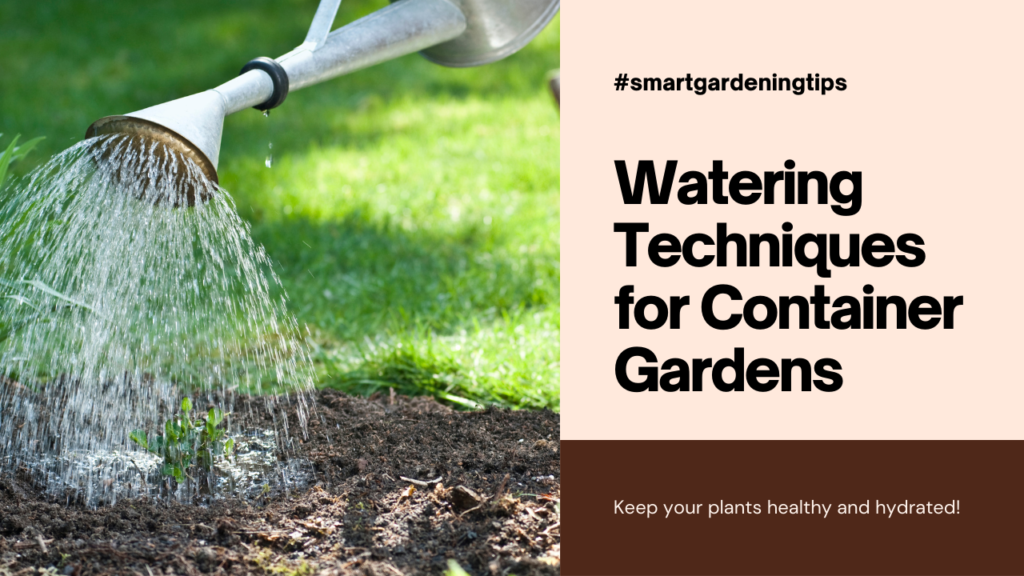
When it comes to watering your container plants, it’s important to strike a balance. Overwatering can lead to root rot and other moisture-related issues, while underwatering can result in wilted and stressed plants. Here are some proper watering techniques to keep in mind:
- **Consistent watering:** Maintain a regular watering schedule to provide your plants with the necessary moisture.**
- **Deep watering:** Water your container plants deeply to encourage root growth and ensure that the entire root ball receives moisture.**
- **Drainage:** Check that your containers have proper drainage holes to prevent water from accumulating and causing waterlogged soil.**
- **Watering at the base:** Direct your watering efforts at the base of the plants to avoid wetting the foliage, which can lead to diseases and fungal problems.**
Remember to consider external factors such as weather patterns, plant types, and container materials when establishing the appropriate watering routine. Observing your plants’ response to watering will help you fine-tune your approach.
2. Essential Maintenance Practices for Healthy Container Plants
Maintaining your container plants goes beyond watering. Regular upkeep and care are necessary for promoting healthy growth and preventing pest infestations. Here are some essential maintenance practices to incorporate into your routine:
- **Deadheading:** Remove spent blooms and wilted foliage to encourage new growth and maintain an attractive appearance.**
- **Pruning:** Prune your plants as needed to shape them, remove dead or damaged parts, and promote bushier growth.**
- **Fertilizing:** Feed your container plants with balanced fertilizers to replenish nutrients and support their growth throughout the season. Follow the product instructions for proper application.**
- **Pest control:** Keep an eye out for common pests such as aphids, mites, and snails. If necessary, apply organic pest control methods or consult a professional for effective solutions.**
Regularly inspecting your plants for signs of stress, disease, or nutrient deficiencies will allow you to address any issues promptly. Additionally, consider rotating your containers periodically to ensure even light exposure for all parts of the plant.
**”Proper watering and regular maintenance are the keys to a thriving container garden.”**
| Container Size | Watering Frequency |
|---|---|
| Small containers (6 inches or less) | Every 1-2 days |
| Medium containers (6-12 inches) | Every 2-3 days |
| Large containers (12 inches or more) | Every 3-4 days |
Use the table above as a general guideline for watering frequency based on container size. However, always assess the moisture level of the soil by sticking your finger about an inch deep into the soil. If it feels dry, it’s time to water.
By implementing proper watering techniques and following essential maintenance practices, you can create a thriving container garden that will bring beauty and joy to your space. Take the time to observe and care for your plants, and you’ll reap the rewards of a healthy and vibrant container garden.
Creative Container Gardening Ideas
Are you looking to add a touch of creativity to your container garden? Look no further! We’ve gathered some unique and inspiring ideas to help you take your container gardening game to the next level. From repurposing everyday items to designing themed container displays, these ideas will not only make your container garden stand out but also spark joy and conversation.
1. Repurpose and Upcycle
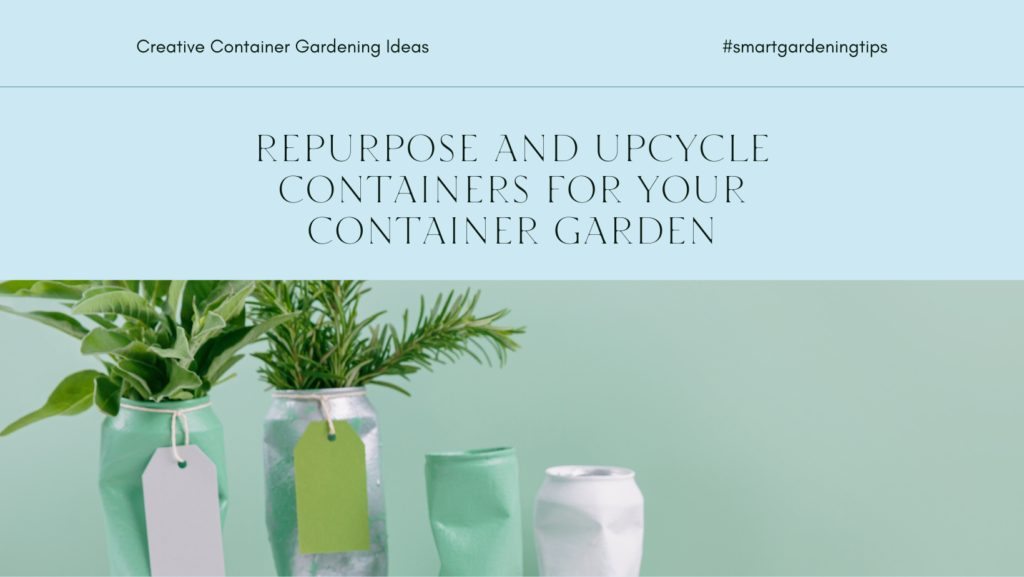
Give new life to old household items by repurposing them as containers for your plants. Transform an old teapot into a whimsical herb garden, use vintage tin cans for growing succulents, or repurpose wooden crates as planters for your favorite flowers. The possibilities are endless when it comes to finding creative containers for your garden.
2. Themed Container Displays
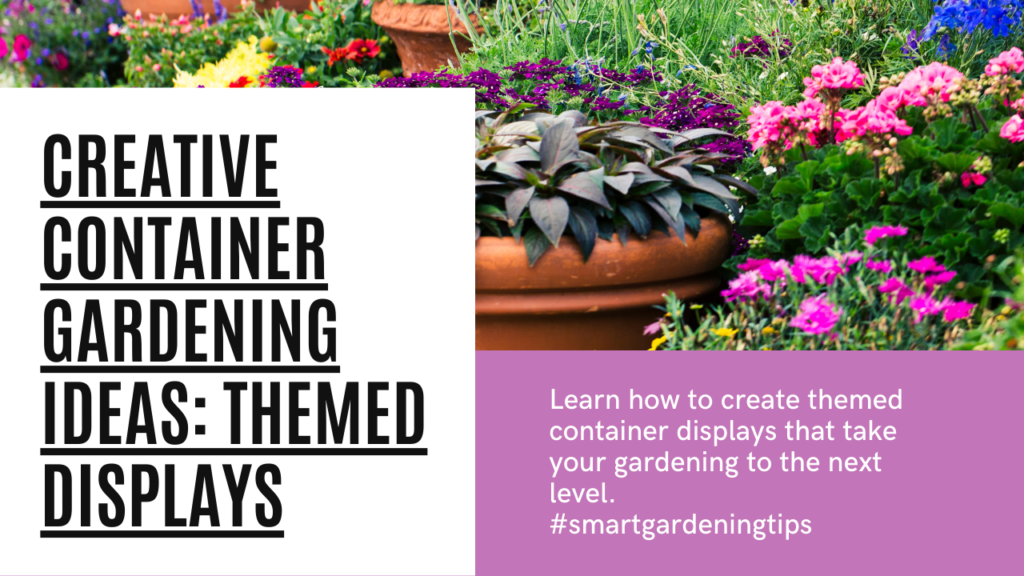
Add a touch of charm and cohesiveness to your container garden by creating themed plant displays. Embrace your love for fairy tales with a container garden inspired by Alice in Wonderland, complete with teacup planters, tiny garden statues, and vibrant flowers. Or, showcase your love for tropical vibes by designing a container garden filled with exotic plants, palm trees, and colorful blooms.
3. Vertical Gardening

Make the most of limited space by exploring vertical gardening techniques. Hang a vertical pallet garden on your balcony or fence, creating a stunning display of cascading flowers and trailing vines. You can also repurpose an old ladder by transforming it into a vertical plant stand, allowing you to grow an abundance of plants in a small footprint.
4. Edible Container Gardens
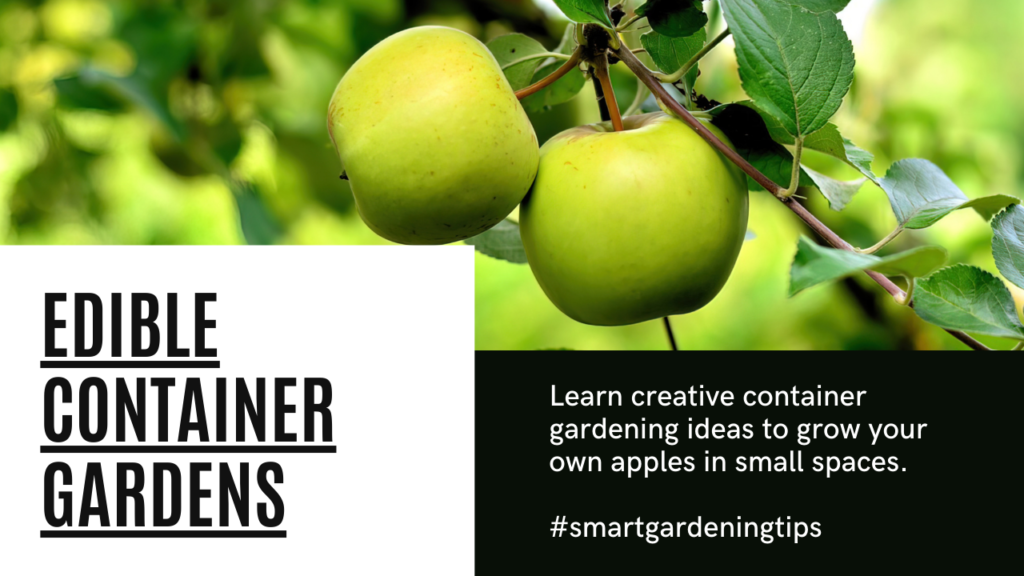
Combine beauty and functionality by growing edible plants in your container garden. Plant colorful lettuce varieties in a tiered planter for a vibrant and nutritious salad garden. Grow cherry tomatoes in hanging baskets, and enjoy the convenience of having fresh produce right outside your door. With edible container gardens, you can feast both your eyes and your taste buds.
5. Mix and Match Textures
Create visual interest in your container garden by mixing and matching plants with different textures. Pair delicate ferns with sturdy succulents, coarse ornamental grasses with soft petunias, or fuzzy lamb’s ear with smooth green foliage. The contrasting textures will add depth and intrigue to your container garden.
With these creative container gardening ideas, you can transform your garden into a work of art. Let your imagination run wild and experiment with different styles, themes, and materials to create a container garden that reflects your personal style. Happy gardening!
Importance of Quality Soil and Fertilizers
When it comes to container gardening, the quality of your soil and fertilizers plays a crucial role in the success and vitality of your plants. Choosing the right soil mix and fertilizers is essential to provide the necessary nutrients for vibrant and healthy plant growth. Let’s explore why high-quality soil and fertilizers are of utmost importance in container gardening.
Benefits of Quality Soil
Quality soil provides a solid foundation for your container garden. It not only supports the roots of your plants but also ensures proper drainage and water retention. Good soil mix should be well-draining to prevent waterlogged roots, which can lead to root rot. At the same time, it should retain enough moisture to keep your plants hydrated.
Using a high-quality soil mix in your containers helps promote healthy root development and optimal nutrient absorption. It provides a balanced pH level, essential for proper nutrient uptake by your plants. Additionally, quality soil enhances aeration, allowing oxygen to reach the roots and preventing suffocation.
Choosing the Right Soil Mix
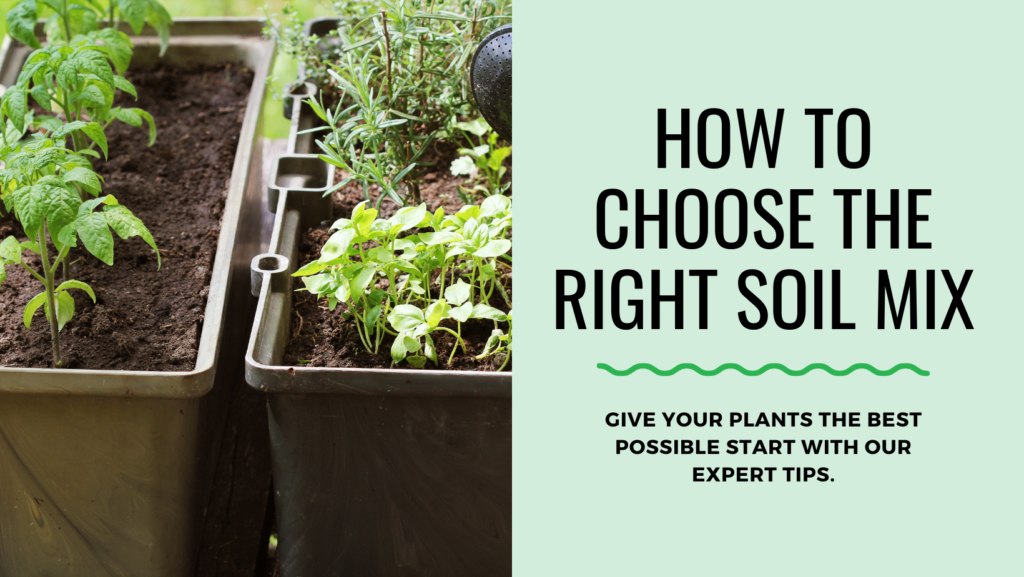
When selecting a soil mix for container gardening, look for options specifically formulated for this purpose. These mixes are usually lightweight, well-draining, and enriched with nutrients to support plant growth. You can find pre-packaged blends designed for different types of plants, such as vegetables, herbs, or flowers.
Consider the specific needs of your plants when choosing a soil mix. Some plants, like cacti and succulents, require a sandy mixture with excellent drainage, while others, like moisture-loving plants, need a soil mix that retains more water. By choosing the right soil mix, you can provide an optimal growing environment tailored to the needs of your plants.
The Role of Fertilizers

Fertilizers are essential in replenishing nutrients that may be lacking in the soil or depleting over time. They provide the additional boost your plants need to thrive and produce abundant blooms or harvests. Fertilizers supply essential elements like nitrogen, phosphorus, and potassium, as well as trace minerals necessary for robust plant growth.
By incorporating fertilizers into your container gardening routine, you ensure that your plants receive a steady supply of nutrients throughout the growing season. This helps sustain their overall health, vigor, and productivity. Additionally, fertilizers can enhance root development, improve disease resistance, and promote beautiful foliage, flowers, and fruits.
Choosing the Right Fertilizers
When it comes to selecting fertilizers for your container garden, there are various options available. You can choose between synthetic fertilizers or organic alternatives, depending on your gardening preferences. Both types provide essential nutrients, but organic fertilizers also improve soil structure and promote microbial activity and beneficial organisms.
Consider the specific nutrient requirements of your plants when choosing fertilizers. Different plants may have different needs at various stages of growth. Look for fertilizers labeled with the appropriate nutrient ratios, such as N-P-K (nitrogen, phosphorus, and potassium), to ensure you meet the specific nutritional requirements of your plants.
Summary
Ensuring the use of high-quality soil and fertilizers is crucial to the success of your container garden. Quality soil provides proper drainage, moisture retention, and optimal nutrient uptake for healthy plant growth. Choosing a soil mix tailored to your plant’s needs creates an ideal growing environment. Fertilizers further enrich the soil by providing essential nutrients for robust plant development, disease resistance, and abundant blooms or harvests. By investing in quality soil and fertilizers, you set the foundation for a thriving and fruitful container garden.
Repurposing Containers for Gardening Projects
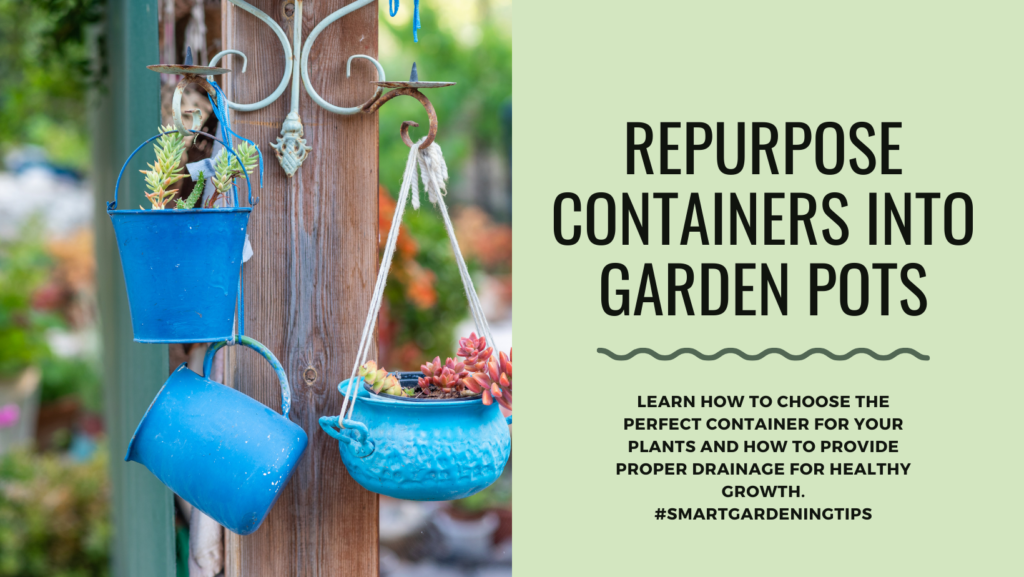
When it comes to gardening, you don’t always need to invest in expensive planters or containers. Repurposing everyday items can not only save you money but also add a unique touch to your gardening projects. Let your creativity flourish by finding alternative uses for containers that might otherwise end up in the recycling bin.
Think Outside the Box: Unconventional Container Ideas
Why limit yourself to traditional planters? Explore unconventional container ideas that add charm and character to your garden.
- Teacups and saucers: Transform delicate teacups and saucers into charming mini planters for succulents or herbs.
- Old boots or shoes: Give new life to worn-out boots or shoes by planting flowers or trailing plants in them.
- Buckets and pails: Utilize old buckets and pails to create a rustic container garden, perfect for growing vegetables or herbs.
- Wooden crates: Repurpose wooden crates as raised planters, adding a rustic touch to your garden.
- Wine barrels: Upcycle wine barrels into large planters, ideal for growing fruit trees or vibrant flowers.
Add a Touch of Whimsy: Creative Container Decorations
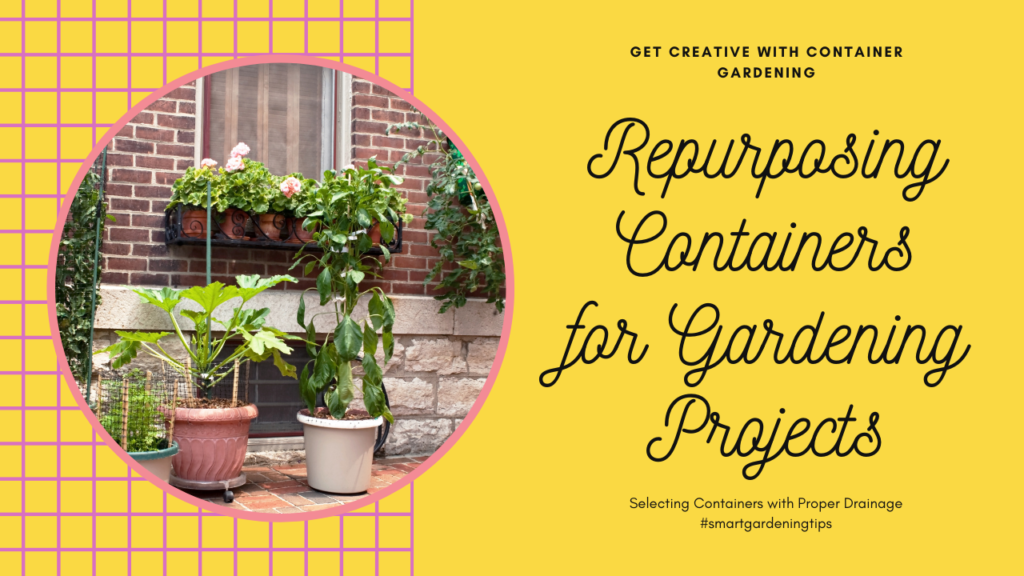
Don’t just settle for plain containers. Adding decorative elements can enhance the visual appeal of your repurposed containers.
- Painted designs: Use acrylic paints to add colorful patterns or designs to your containers, expressing your personal style.
- Decoupage: Apply decorative paper or fabric to the surface of your container using decoupage techniques, creating a unique and artistic look.
- Mosaic tiles: Embellish your containers with mosaic tiles to create eye-catching patterns and textures.
- Faux finishes: Experiment with faux finish techniques like distressing or antiquing to give your containers an aged or weathered appearance.
“Repurposing containers for gardening projects not only adds a touch of creativity, but it also promotes sustainability by giving new life to old items.” – [Author Name]
By repurposing containers, you can unleash your inner artist and create unique, functional, and environmentally-friendly gardening solutions. Let your imagination run wild as you discover innovative ways to repurpose containers for your gardening projects.
| Container Item | Ideal Plants |
|---|---|
| Teacups and saucers | Succulents, herbs |
| Old boots or shoes | Flowers, trailing plants |
| Buckets and pails | Vegetables, herbs |
| Wooden crates | Various flowers, herbs, vegetables |
| Wine barrels | Fruit trees, flowers |
Selecting Containers with Proper Drainage
When it comes to container gardening, choosing the right containers is essential for the health and success of your plants. One crucial factor to consider is proper drainage. Adequate drainage allows excess water to escape, preventing root rot and ensuring overall plant health. Here are some tips to help you select containers with proper drainage:
1. Opt for Containers with Drainage Holes
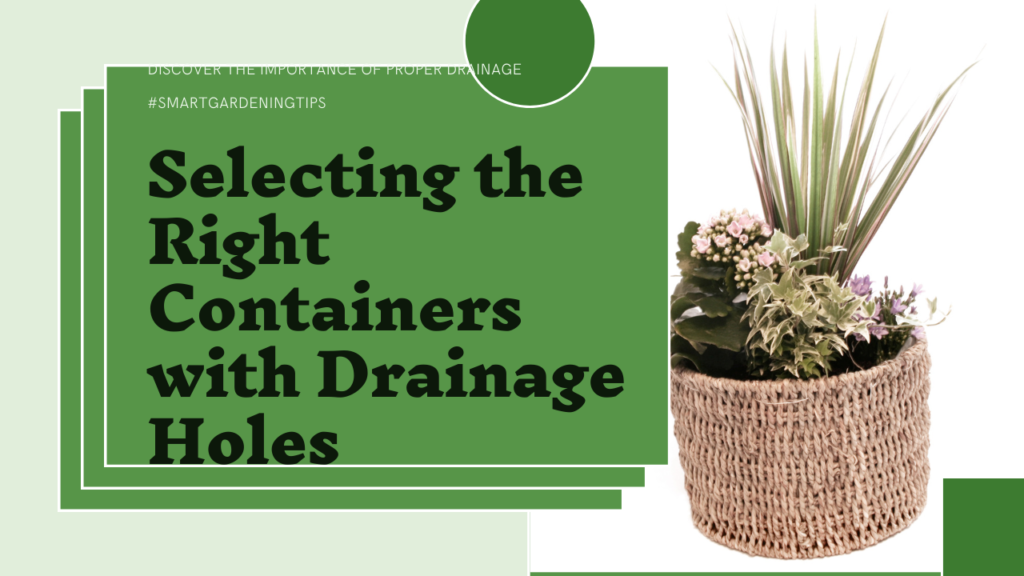
Look for containers that have drainage holes at the bottom. These holes allow excess water to drain out, preventing waterlogging and the accumulation of moisture that can lead to root rot. Containers without drainage holes can trap water, suffocating the roots and causing plant stress.
2. Consider Self-Watering Containers
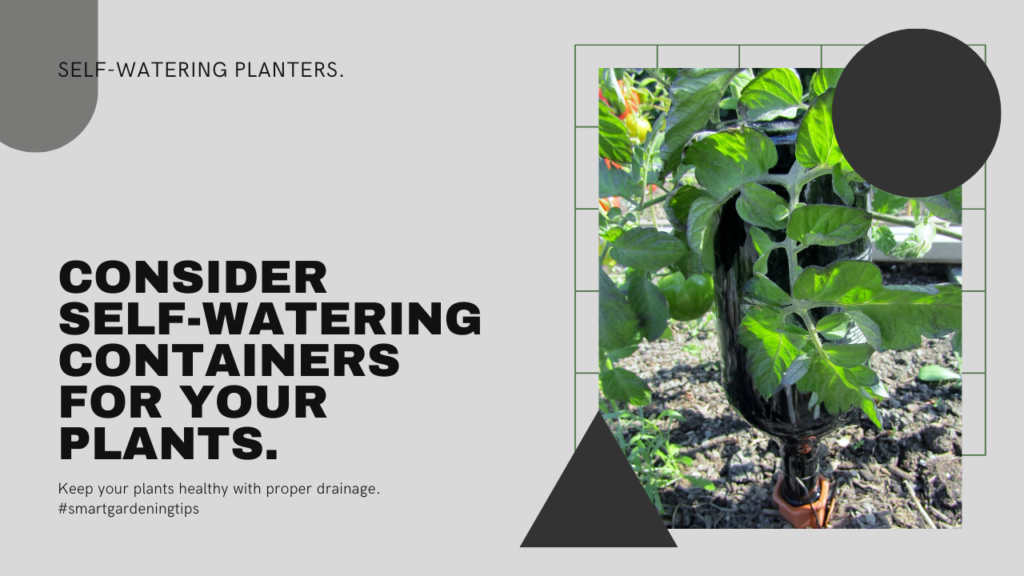
Self-watering containers are an excellent option for those who struggle with watering consistency. These containers have a reservoir system that prevents overwatering by providing a constant supply of moisture to the plants. They typically have a water reservoir at the bottom with a wicking mechanism that allows the plants to absorb water as needed.
3. Use Potting Mixes with Good Drainage
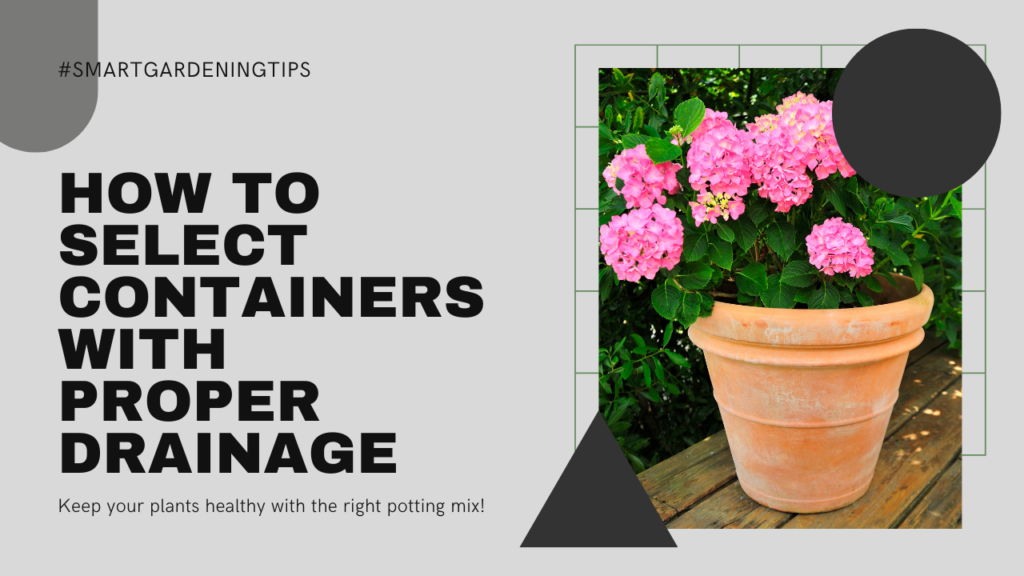
In addition to selecting containers with proper drainage, using potting mixes specifically formulated for container gardening can further enhance drainage. These mixes are designed to retain moisture while allowing excess water to flow through, ensuring that the roots have access to both water and oxygen.
Tip: Avoid using regular garden soil in containers, as it can become compacted and impede drainage.
4. Elevate Containers
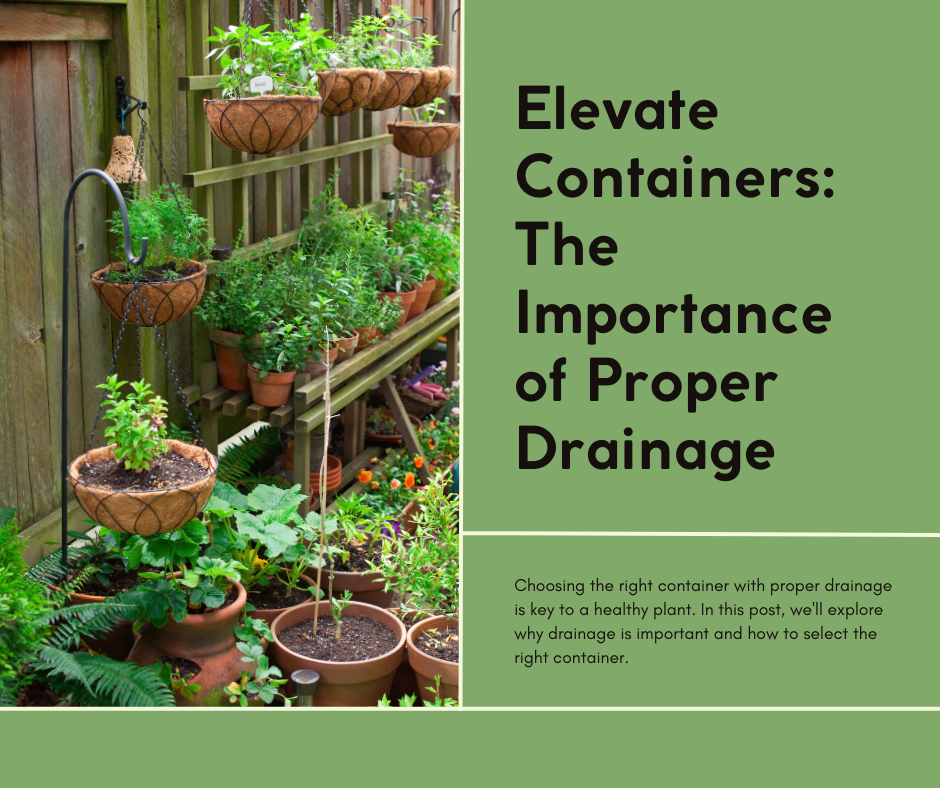
Placing containers on feet or using pot saucers with elevations can help improve drainage. Elevating the containers allows excess water to flow freely and prevents the pots from sitting in pooled water, which can lead to root rot. Make sure the elevation is sufficient to allow proper drainage without impeding the stability of the container.
| Container Types | Drainage |
|---|---|
| Terra cotta | Good drainage due to porous nature |
| Plastic | Drainage holes required |
| Wooden | May require additional drainage holes |
| Ceramic or Porcelain | May require additional drainage holes |
Remember, when selecting containers, always prioritize proper drainage to ensure the health and vitality of your container garden. By following these tips and choosing containers with adequate drainage, you can create an ideal environment for your plants to thrive.
FAQ
Q. What are the benefits of container gardening?
A. Container gardening offers numerous benefits, including its suitability for small spaces and beginners. It provides convenience, versatility, and the opportunity to grow your own greens, even with limited resources.
Q. How do I choose the right containers for my container garden?
A. When choosing containers, consider the material, size, and shape. Ensure the containers have proper drainage to support healthy plant growth. You can select from a variety of options, such as ceramic pots, plastic containers, or repurposed items like old buckets or barrels.
Q. What essential supplies do I need for successful container gardening?
A. To ensure success in container gardening, you will need essential supplies like high-quality potting soil, fertilizers, watering cans, gardening gloves, and pruning shears. These tools and supplies will help you nurture healthy plants and vibrant blooms.
Q. How do I select the right plants for my containers?
A. When selecting plants for containers, consider their growth habit, sun requirements, and mature size. Choose plants that are well-suited for containers, such as flowers like petunias or marigolds, herbs like basil or rosemary, and vegetables like tomatoes or peppers.
Q. Can I mix and match different plants in my containers?
Absolutely! Mixing and matching plants in containers can create visually appealing displays. When combining plants, consider their color, texture, and height. Pair plants with contrasting colors or complementary textures to create unique and stunning container arrangements.
Q. How do I water and maintain my container plants?
A. Proper watering is essential for healthy container plants. Water your containers thoroughly and ensure excess water can drain from the bottom. Regularly check the soil moisture and water when it feels dry. Additionally, maintain your container plants by regularly fertilizing, pruning, and removing dead or yellowing leaves.
Q. Can you share some creative container gardening ideas?
A. Certainly! Get creative with your container garden by repurposing items like old boots, teapots, or wheelbarrows as unique planters. You can also explore themed container displays, such as a succulent garden or an edible herb container. Let your imagination soar and create one-of-a-kind container gardening designs!
Q. Why is quality soil and fertilizer important in container gardening?
A. Quality soil provides the necessary nutrients and drainage for plants to thrive in containers. Choose a well-draining soil mix specifically formulated for container gardening. Additionally, fertilizers help replenish essential nutrients in the soil, ensuring healthy plant growth and vibrant blooms.
Q. How can I repurpose containers for gardening projects?
A. Repurposing containers is a great way to add creativity to your gardening projects. Consider using items like old tin cans, mason jars, or wooden crates as unique planters. Get resourceful and give new life to everyday objects while creating functional and decorative containers for your plants.
Q. Why is it important to choose containers with proper drainage?
A. Proper drainage is crucial in container gardening to prevent waterlogging and root rot. Containers with drainage holes or the ability to create adequate drainage ensure excess water can escape, allowing the roots to breathe and promoting healthy plant growth.
Conclusion
In conclusion, container gardening offers a rewarding and accessible solution for individuals looking to grow their own greens and beautify small spaces. By incorporating the techniques shared in this article, you can create a thriving container garden that not only provides fresh produce but also enhances the aesthetic appeal of your surroundings.
With the convenience and versatility of container gardening, even those with limited resources and space can enjoy the benefits of nurturing plants. From apartment balconies to urban rooftops, container gardening enables you to unleash your creativity and cultivate a mini oasis that reflects your personal style and preferences.
So why wait? Start your container gardening journey today and experience the joy of harvesting your own homegrown vegetables and herbs. Whether you’re a beginner or have years of gardening experience, container gardening is a fulfilling and sustainable way to connect with nature and reap the rewards of your efforts.


